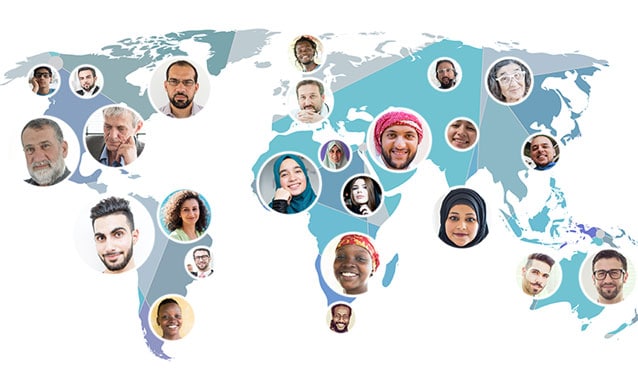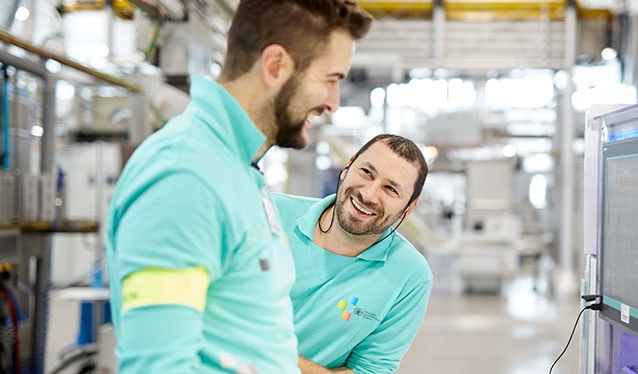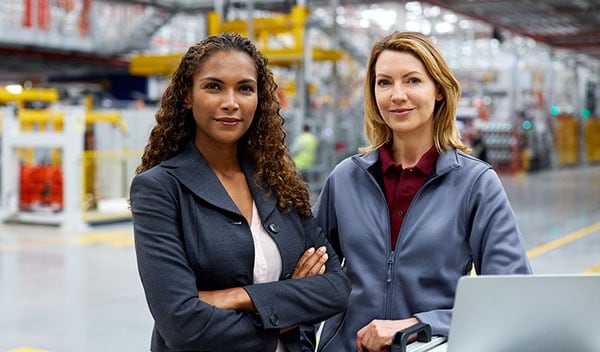How many people do you know with disabilities? Chances are the real figure is much higher than you think. An estimated 1.3 billion people globally experience significant disability, according to the World Health Organization, many of them invisible. Disabilities can be met with discrimination, stigma, and “ableism” in all areas of life. If not addressed, these issues can deprive individuals of an enjoyable career and companies the chance to hire talented employees who have a disability.
As someone who has had hearing loss since childhood, I’ve faced various barriers in my education and career. However, through awareness and harnessing technology, I’ve learned that small changes made by firms can lead to huge, positive impacts on employees with disabilities.
Growing up with a disability
There were signs I had difficulties hearing as a child, but I was never diagnosed. At 18, I was told I’d benefit from hearing aids, but I didn’t want to be told “you’re now disabled” and put in a box. I know many people with disabilities can struggle with this.
As hearing loss isn’t visible and my family had no experience of it, I found it could be incredibly isolating. I started wearing hearing aids, but was determined to carry on “as normal” and hid my disability from everyone as best I could. Ironically, although I was trying to blend in with the hearing world, I actually isolated myself further from it.
Tamara Marshall,
SEO Manager
Philip Morris International
Moving into the workplace
It wasn’t until I began full-time work that I realized the challenges I faced. My first job was in journalism, and I found listening and transcribing recorded interviews difficult, especially when the subject was fast-talking or had a strong accent. Open plan offices were also challenging, and I’d dread using telephones because I’d struggle to hear the caller. Worse still, I would question whether I was good enough for a role because of my disability, which would affect my confidence meeting people and taking on projects.
As my career progressed—moving into digital marketing and SEO strategy roles—I had to accept that my hearing loss meant I couldn’t perform at my best unless I was honest about it and asked for support. It has taken many years to build up my confidence and declare my hearing loss to an employer whilst fighting the fear of being judged, excluded, or treated differently as a result.
Since joining Philip Morris International (PMI) in 2023, I’ve been pleased by the steps taken by the company, my line manager, and my team to facilitate the support and tools I need to work at my best and to feel more included. Indeed, I’ve gained a new perspective on the importance of accessibility in the workplace.
Seven ways companies can break down accessibility barriers in the workplace
Here are my top tips on how both managers and their employees can support colleagues with disabilities.
Don’t be afraid to ask questions
Whilst some find it difficult to start a conversation about their disability, I’ve found that others can also be unsure about how to raise the topic with me.
I believe colleagues can understand me and collaborate better if they know about my disability. It may be uncomfortable at first, but once the ice is broken, we can find common ground. Therefore, I strongly encourage both parties to ask questions and bring their authentic selves—including any disabilities—to the room. Employers should always ensure disabled colleagues feel included in the workplace.
Find out what tools are needed
Different disabilities require different modifications or tools to empower an individual to perform their job. Never assume you know what someone needs—ask them. For me, transcriptions on video calls or webcasts are crucial, enabling me to catch anything I missed audibly. I also benefit from a specialist hearing device that allows me to stream calls from my laptop directly to my hearing aids.
When I started at PMI, a doctor helped me do a workplace assessment to ensure the office catered to my needs. I also appreciated the company’s funding of a captioning service during an off-site team event, which made it more accessible.
Consider your presenting and communication skills
If you’re presenting, think about your communication skills. Good presenters will enunciate and project clearly, talk at a steady pace, and ensure they emphasize their main points. This makes it much easier for me to follow and I’m more likely to stay engaged. It also really helps me if I can see a person’s face when they’re talking, whether in person or during video calls, as facial expressions and body language are vital communication tools.
The importance of empathy
Many people I work with do not have a disability, so I don’t expect them to understand the reality of living with hearing loss, and that’s OK. However, a little empathy about what could be challenging goes a long way. Showing an interest in someone’s preferred ways of working or how they like to be communicated with shows empathy and support, which can be incredibly reassuring and confidence-boosting. If I feel heard and I can communicate effectively with a colleague, I feel good.
Employee Resource Groups
One thing I really value about PMI is the Employee Resource Groups (ERGs) focused on a variety of diversity dimensions. Last summer, I joined the PMI Able ERG for differently abled individuals, which has been a great source of allyship and has provided a platform for me to make others more aware of hearing loss.
Awareness training
A helpful team-building exercise that directly benefitted me has been deaf awareness training. My colleagues and I spent half a day in training so they could understand my reality and how they could help me to feel a valued and included member of the team.
What I loved most was how empowering it felt. The trainer’s experience with deafness showed there is so much more I can achieve when I ask for support, and that the onus isn’t just on me to make the workplace more accessible and accommodative for my needs. It’s also up to my colleagues to meet me in the middle to foster inclusive ways of working.
Gently alert people’s attention before speaking to them
Disabilities such as hearing loss can prevent people from knowing if someone is behind them. So, rather than approaching from behind, come around in front of them first, or gently tap them on the shoulder to let them know you are there. And use their name first to get their attention. This can help ensure they are ready to listen when you start talking. For people with hearing loss, this simple action gives them the opportunity to face you and capture all the words.
Reflecting on my experience so far at PMI
PMI’s policies and the Able ERG have allowed me—for the first time in my career—to truly feel comfortable and be open about my condition. Even during the application stage, I felt able to be transparent and didn’t fear any of the biases I’d previously experienced.
By breaking down various barriers in the workplace—be it physical, organizational, attitudinal, or social—you can empower employees with disabilities to feel included and valued. My hope is that everyone with a disability—whatever company they work for—is afforded similar opportunities to thrive at work.








